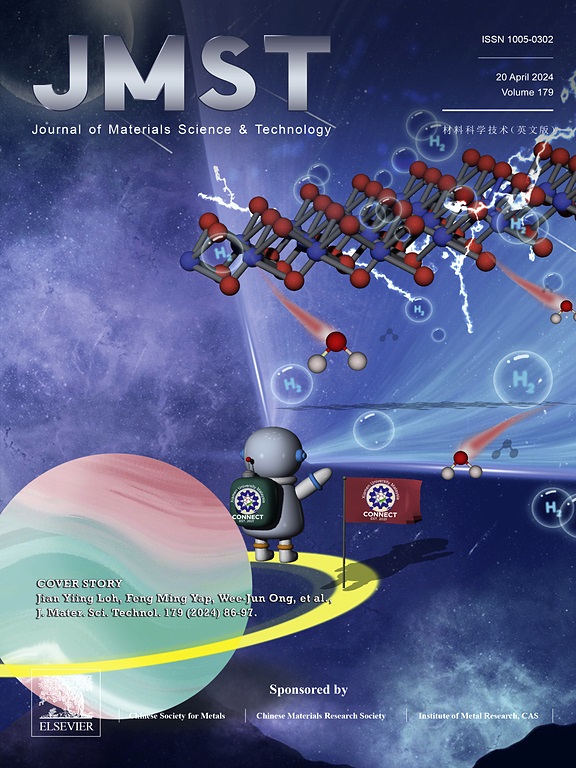Coherent Cu-rich nanoprecipitates: Achieving both high strength and superior magnetic properties in non-oriented silicon steels
IF 11.2
1区 材料科学
Q1 MATERIALS SCIENCE, MULTIDISCIPLINARY
引用次数: 0
Abstract
Non-oriented silicon steels with both excellent magnetic properties and high strength are essential for the drive motors of new energy vehicles. However, achieving a balance between strength and magnetic properties is a challenging task. This study successfully developed non-oriented silicon steel that met these demanding requirements by utilizing the coherent nano-Cu-rich phases precipitated during aging. In the current investigation, the evolution of precipitation during the aging process of Cu-alloyed non-oriented silicon steel is revealed as: BCC Cu-rich cluster (Fe:Cu > 1) → B2 FeCu cluster (Fe:Cu approaches 1) → BCC Cu cluster (Fe:Cu < 1) → Twinned 9R Cu → Detwinned 9R Cu. Notably, the 9R Cu precipitated in the later stage of aging was coarse and incoherent with the matrix, offering minimal strengthening benefits while considerably deteriorated the magnetic properties. Conversely, the other three phases that formed in the early stage of aging were fine, dispersed, and coherent with the matrix, effectively enhancing the yield strength of the steel with minimal negative impact on its magnetic properties. The total increment of yield strength attributed to BCC Cu-rich clusters, B2 FeCu clusters, and BCC Cu clusters were 207, 304, and 374 MPa, respectively. The strengthening mechanism operated primarily through the cutting mechanism, which was dominated by the modulus difference strengthening and coherent strain strengthening. Moreover, a unique ordered strengthening of approximately 207 MPa arose from the ordered B2 FeCu clusters. Thus, the steel aged for 3–30 min with the precipitation of B2 FeCu clusters and BCC Cu clusters exhibited the most favorable overall performance with a yield strength of 750–800 MPa, P1.0/400 of 16.3–18.3 W kg−1, and B5000 of 1.641–1.656 T.

求助全文
约1分钟内获得全文
求助全文
来源期刊

Journal of Materials Science & Technology
工程技术-材料科学:综合
CiteScore
20.00
自引率
11.00%
发文量
995
审稿时长
13 days
期刊介绍:
Journal of Materials Science & Technology strives to promote global collaboration in the field of materials science and technology. It primarily publishes original research papers, invited review articles, letters, research notes, and summaries of scientific achievements. The journal covers a wide range of materials science and technology topics, including metallic materials, inorganic nonmetallic materials, and composite materials.
 求助内容:
求助内容: 应助结果提醒方式:
应助结果提醒方式:


